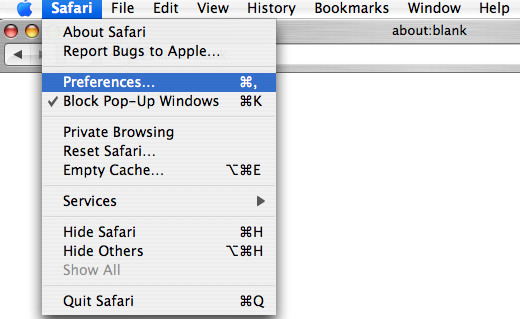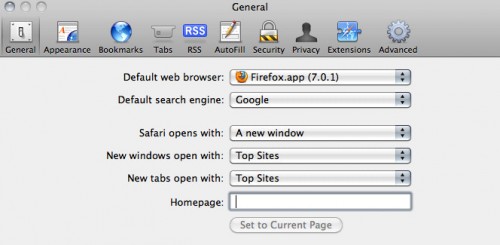What is ProgressBuffer
According to security researchers, ProgressBuffer is a PUP (potentially unwanted program) that belongs to the Adware family . Adware is a form of software whose motive is to generate profit for its developer. It have different methods of earning by showing the ads forcibly to its victims. Adware can open popups, display annoying ads, modify the victim’s browser settings, or redirect the victim’s internet browser to unknown websites. Aside from causing unwanted advertisements and internet browser redirections, it also can slow down the Apple Mac.

Unwanted ads
Another reason why you need to remove ProgressBuffer is its online data-tracking activity. It be able to collect marketing-type data about you to get profit. Adware can analyze your surfing, and gain access to your confidential information and, afterwards, can use it for marketing purposes. Thus, there are more than enough reasons to remove ProgressBuffer from your Apple Mac.
Therefore, the ProgressBuffer does not really have beneficial features. So, we recommend you get rid of it ASAP. This will also prevent the adware software from tracking your online activities. A full ProgressBuffer removal can be easily carried out using manual or automatic way listed below.
How does ProgressBuffer get on your MAC OS
Adware commonly comes on the Mac with free programs. In many cases, it comes without the user’s knowledge. Therefore, many users aren’t even aware that their computer has been affected with PUPs and adware. Please follow the easy rules in order to protect your Apple Mac from adware software and potentially unwanted programs: don’t install any suspicious apps, read the user agreement and select only the Custom, Manual or Advanced setup method, don’t rush to click the Next button. Also, always try to find a review of the application on the World Wide Web. Be careful and attentive!
Threat Summary
| Name | ProgressBuffer |
| Type | adware, potentially unwanted application (PUA), pop-up virus, pop up advertisements, pop-ups |
| Symptoms |
|
| Removal | ProgressBuffer removal guide |
How to Remove ProgressBuffer adware
There present several free adware removal tools. Also it is possible to remove ProgressBuffer adware manually. But we recommend to combine all these solutions below into the one removal algorithm. Follow the steps of the guide. Some of the steps below will require you to exit this website. So, please read the steps carefully, after that bookmark it or open it on your smartphone for later reference.
To remove ProgressBuffer, use the steps below:
- How to remove ProgressBuffer adware software without any software
- Automatic Removal of ProgressBuffer adware
- How to stay safe online
- To sum up
How to remove ProgressBuffer adware software without any software
This part of the blog post is a step-by-step guide that will show you how to remove ProgressBuffer adware manually. You just need to follow every step. In this case, you do not need to download any additional software.
Uninstall questionable apps using the Finder
We suggest that you start the Apple Mac cleaning process by checking the list of installed software and delete all unknown or dubious applications. This is a very important step, as mentioned above, very often the malicious programs such as adware and browser hijackers may be bundled with free programs. Delete the unwanted applications can get rid of the intrusive advertisements or browser redirect.
Open Finder and click “Applications”.

Very carefully look around the entire list of programs installed on your MAC OS. Most probably, one of them is the ProgressBuffer adware. If you have many software installed, you can help simplify the search of harmful applications by sort the list by date of installation.
Once you’ve found a questionable, unwanted or unused application, right click to it and select “Move to Trash”. Another method is drag the application from the Applications folder to the Trash.
Don’t forget, select Finder -> “Empty Trash”.
Remove ProgressBuffer from Chrome
The adware can alter your Chrome settings without your knowledge. You may see an unknown web-page as your search engine or start page, additional plugins and toolbars. Reset Google Chrome browser will allow you to get rid of ProgressBuffer ads and reset the unwanted changes caused by adware. It will keep your personal information like browsing history, bookmarks, passwords and web form auto-fill data.

- First start the Chrome and click Menu button (small button in the form of three dots).
- It will display the Chrome main menu. Choose More Tools, then click Extensions.
- You’ll see the list of installed extensions. If the list has the plugin labeled with “Installed by enterprise policy” or “Installed by your administrator”, then complete the following guidance: Remove Chrome extensions installed by enterprise policy.
- Now open the Google Chrome menu once again, click the “Settings” menu.
- You will see the Chrome’s settings page. Scroll down and click “Advanced” link.
- Scroll down again and click the “Reset” button.
- The Chrome will show the reset profile settings page as shown on the image above.
- Next press the “Reset” button.
- Once this task is complete, your web browser’s newtab, start page and search engine will be restored to their original defaults.
- To learn more, read the article How to reset Chrome settings to default.
Delete ProgressBuffer from Mozilla Firefox by resetting browser settings
This step will help you remove ProgressBuffer ads, third-party toolbars, disable harmful extensions and revert back your default start page, new tab page and search provider settings.
First, run the Firefox and click ![]() button. It will open the drop-down menu on the right-part of the internet browser. Further, click the Help button (
button. It will open the drop-down menu on the right-part of the internet browser. Further, click the Help button (![]() ) as displayed in the following example.
) as displayed in the following example.

In the Help menu, select the “Troubleshooting Information” option. Another way to open the “Troubleshooting Information” screen – type “about:support” in the browser adress bar and press Enter. It will show the “Troubleshooting Information” page like below. In the upper-right corner of this screen, click the “Refresh Firefox” button.

It will open the confirmation prompt. Further, click the “Refresh Firefox” button. The Firefox will start a procedure to fix your problems that caused by the ProgressBuffer adware. Once, it’s complete, click the “Finish” button.
Delete ProgressBuffer adware software from Safari
By resetting Safari browser you revert back your internet browser settings to its default state. This is good initial when troubleshooting problems that might have been caused by ProgressBuffer .
Run Safari web-browser. Next, choose Preferences from the Safari menu.

First, click the “Security” tab. Here, select “Block pop-up windows”. It will stop some types of popups.
Now, click the “Extensions” icon. Look for questionable addons on left panel, select it, then press the “Uninstall” button. Most important to get rid of all suspicious extensions from Safari.
Once complete, check your homepage and search provider settings. Click “General” tab. Make sure that the “Homepage” field contains the website you want or is empty.

Make sure that the “Search engine” setting shows your preferred search engine. In some versions of Safari, this setting is in the “Search” tab.
Automatic Removal of ProgressBuffer adware
Run malicious software removal utilities to get rid of ProgressBuffer adware automatically. The free programs utilities specially designed for browser hijackers, adware and other potentially unwanted software removal. These tools can delete most of adware from Safari, Mozilla Firefox and Google Chrome. Moreover, it can remove all components of adware from Windows registry and system drives.
How to automatically remove ProgressBuffer with MalwareBytes
If you are still having problems with the ProgressBuffer removal or just wish to scan your MAC occasionally for adware and other malicious software, then download MalwareBytes Anti-Malware. It’s free for home use, and scans for and removes various unwanted apps that attacks your computer or degrades computer performance. MalwareBytes AntiMalware can get rid of hijacker, adware software, PUPs as well as malware, including ransomware and trojans.
Download MalwareBytes Anti Malware from the following link.
20943 downloads
Author: Malwarebytes
Category: Security tools
Update: September 10, 2020
Once the download is complete, close all software and windows on your Apple Mac. Run the saved file. Follow the prompts.
The MalwareBytes Free will automatically start and you can see its main screen like below.

Now click the “Scan” button to perform a system scan for the ProgressBuffer adware. This task can take quite a while, so please be patient. When a threat is found, the number of the security threats will change accordingly.

When that process is finished, MalwareBytes Anti-Malware (MBAM) will display a list of found items. Next, you need to click “Remove Selected Items” button. The MalwareBytes will remove ProgressBuffer and move the selected threats to the Quarantine.
How to stay safe online
The AdGuard is a very good ad blocker program for the Safari, Firefox and Google Chrome, with active user support. It does a great job by removing certain types of undesired advertisements, popunders, popups, unwanted new tab pages, and even full page advertisements and webpage overlay layers. Of course, the AdGuard can block harmful web sites automatically or by using a custom filter rule.

- Installing the AdGuard is simple. First you will need to download AdGuard on your computer by clicking on the following link.
AdGuard for Mac download
3752 downloads
Author: © Adguard
Category: Security tools
Update: January 17, 2018
- Once the download is complete, launch the downloaded file. You will see the “Setup Wizard” program window. Follow the prompts.
- After the install is finished, click “Skip” to close the install application and use the default settings, or press “Get Started” to see an quick tutorial which will allow you get to know AdGuard better.
- In most cases, the default settings are enough and you do not need to change anything. Each time, when you run your machine, AdGuard will start automatically and stop undesired advertisements, block malicious and misleading web sites.
To sum up
Once you have done the steps above, your MAC OS should be free from the ProgressBuffer adware and other malicious software. The Mozilla Firefox, Safari and Google Chrome will no longer display any unwanted ads. Unfortunately, if the steps does not help you, then you have caught a new adware software, and then the best way – ask for help here.

















